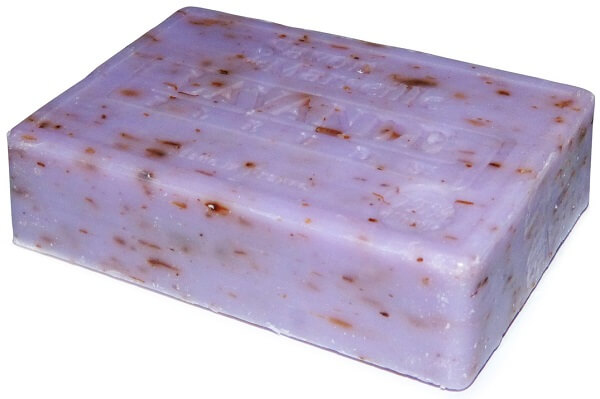The modern homemade lye soap is not the dated Grandma’s lye soap that was heavy and harsh. What more, you need not use lard as the key ingredient for homemade lye soap. You can use sunflower or canola, or other oils. Using oil will make your soap greasier than if you use lard, but it is all a matter of preference.
The Do’s of Processing
- Process in well-ventilated location
- Keep away from children
- Whether you are buying lye from the store or making it yourself, handle with extreme care and caution. It is a very strong irritant to the skin, eyes, and throat.
- Use rubber gloves and safety glasses when making homemade lye soap
- Use glass, plastic, enamelware, wood, or stoneware for processing homemade lye soap
- Add lye to cold water, not cold water to lye.
- Stir slowly to avoid splashes
- When the lye and the lard separates, liquefy the mixture and add about a cup of water while slowly stirring. Keep adding a cup of water until your mixture is in syrup consistency.
- Reserve the pans or other utensils you use exclusively for processing homemade lye soap. You should not use them for food processing.
- Remember not to use pans or other utensils that are made of metal, tin, aluminum, iron, or Teflon.
Materials for Homemade Lye Soap
- Glass bowls
- Glass cooking thermometer
- Measuring plastic cups
- Rubber gloves
- Safety glasses
- Soap molds
- Wax paper
- Wooden spoons
Ingredients for Homemade Lye Soap
- Crisco for greasing the soap molds
- 1-1/2 cups (12 ounces) of lye
- 4 cups (32 ounces) cold soft water
- 3 cups (24 ounces) coconut oil
- 3 cups and one ounce (25 ounces) olive oil, not virgin
- 1or 2 drops of scented essential oil and of food coloring to match the scent, if desired
- 24 ounces solid vegetable oil
Processing Homemade Lye Soap
- Wear safety glasses and gloves
- Work in a well-ventilated area
- Place four cups of soft water in one of the glass bowls
- Pour very slowly (to avoid splashing) and in a continuous stream 1-1/2 cups of lye in the bowl with water, stirring constantly with a wooden spoon
- Stir with a wooden spoon until smooth; the chemical reaction will cause the temperature of the mixture to rise considerably
- Set aside the bowl with the mixture and let cool
- Melt the lard or fat
- Check with the glass thermometer both fat and lye; the temperature should be between 85º and 100º
- Combine both ingredients
- Pour the liquid fat in another glass bowl
- Very slowly add the cooled mixture
- Stir the ingredients with the wooden spoon until you can see the spoon cut a path in the mixture for a few seconds
- Stir in a drop of food coloring, if desired; do not overdo the food coloring
- Stir in a drop of fragrance oil, if desired; it should be a faint scent
- Grease your homemade lye soap molds and line with wax paper
- Pour the mixture in the homemade lye soap molds, and place wax paper on top of them
- Wrap the homemade lye soap molds in towels to set up overnight
- Remove the homemade lye soap and cut, if desired
- Place on a rack in a cool, dry place
- Let dry up two to three weeks to harden your homemade lye soap








